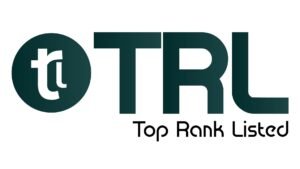Candidate Tracking Systems – Did you know recruiters spend about 13 hours weekly on manual admin tasks? That’s more than a full workday wasted on scheduling interviews, sending emails, and updating spreadsheets.
For many companies, the main hiring problem isn’t a shortage of candidates — it’s the messy, disorganized way they’re managed.
Ready to stop losing track of top talent and build a smoother, more efficient hiring process?
This guide explains a candidate tracking system, how it works, and why it’s the key to turning your recruitment process from chaos into a well-oiled machine.
What is a Candidate Tracking System?
A candidate tracking system (CTS), often called an Applicant Tracking System (ATS), is recruiting software that helps businesses manage and automate hiring.
Think of it as a single place for all your recruitment work. Instead of juggling spreadsheets, email threads, and sticky notes, a CTS stores candidate data, communications, and tasks in one spot.
Say a hiring manager needs to review 50 resumes for a marketing role. Manually, they’d open each file, read through it, and try to remember the top candidates.
With a CTS, they can filter resumes by keywords, rank candidates automatically, and see every applicant’s status—“Application Received,” “Interview Scheduled,” “Offer Extended,” and so on—at a glance.
If you want to dive deeper into this, check out our blog post on What is Application Tracking Software?.
How Does Recruiting Software Optimize Candidate Tracking?
Recruiting software handles the heavy lifting of candidate tracking by automating and simplifying key hiring steps. That lets recruiters spend more time on what matters: connecting with great people.
1. Create and post job ads in just a few clicks
Instead of signing into each job board separately, a CTS lets you write one job description and post it to dozens of platforms—LinkedIn, Indeed, your company’s career page, and more—all at once.
That saves a ton of time and makes sure your job ads reach a much wider audience right away.
2. Build & nurture a warm talent pipeline
A great CTS does more than track active applicants — it helps you build a solid pipeline of passive candidates.
It can automatically parse resumes from your inbox or a career fair and store them in a searchable database, so you can quickly find and reach out to qualified people for future roles, even if they didn’t apply for the current opening.
3. Effectively manage candidate & client interviews
Remember when scheduling an interview meant getting buried in a mountain of emails? Yeah, not fun. These days, a decent CTS just plugs straight into your calendar—boom, candidates can see when you’re free and pick their own slot.
It’s almost too easy. Plus, all the messages, feedback, and even those slightly awkward interview notes all land in one spot on the candidate’s profile.
No more hunting around for someone’s thoughts or, worse, missing a critical detail. Everything the team needs is right there, staring you in the face. Kinda makes you wonder how we ever survived the old way.
4. Track candidate & business progress
A visual hiring pipeline? Total game changer. You’ve got this crystal-clear snapshot of where every single candidate’s at—no more digging through endless spreadsheets or pinging people for updates. Plus, all those juicy stats?
Stuff like how long everyone takes to get onboarded, which job boards are actually worth a damn, who’s ghosting on offers—it’s all right there, front and centre. Makes it way easier to spot where things are gumming up the works, and honestly, helps you stop making those “hmm, I guess we’ll try this?”.
Why fly blind when you can actually see what’s going on? If you’re curious about other ways to improve your team’s workflow, you can check out our post on productivity tracking software.
5. Keep stakeholders in the loop
Honestly, using a candidate tracking system? Total game changer. Everyone’s in on the action—recruiters, hiring managers, clients, you name it. Folks can just drop comments, toss around feedback, and actually see what’s happening with candidates right now, not three days later. And those handy notifications?
They nudge people when it’s go-time, so nobody’s sitting around wondering, “Wait, wasn’t I supposed to do something?” Less stuff slips through the cracks, more stuff gets done. Simple as that.
5 ATS Features That Help Streamline Candidate Tracking
While every ATS is a bit different, a few key features are essential for effective candidate tracking.
1. Reports & analytics dashboard
A robust dashboard gives you a bird’s-eye view of your entire hiring operation. You can generate custom reports on metrics like:
- Time-to-fill: How long it takes to hire for a specific role.
- Source of hire: Where your best candidates are coming from.
- Candidate stage conversion: How many candidates move from one stage to the next?
This data is crucial for optimizing your strategy and proving your recruiting efforts are paying off.
2. Client & candidate communication management
Honestly, a solid CTS just corrals everything—you don’t have to juggle a million tabs or scroll through your inbox like some digital archaeologist. Email, text, whatever, you fire it off straight from the system, and boom, it sticks it right onto the candidate’s profile.
No more head-slamming, trying to dig up what you sent three Tuesdays ago. Everything’s just… there. Super handy, kinda makes you wonder how anyone survived without it.
3. Customized career pages
Real talk: your career page is basically your company’s dating profile—first impressions count. Slap a decent CTS in there, and suddenly your job board looks slick, on-brand, and, yeah, even scrollable for bored folks on their phones. All your positions, front and centre, not buried six clicks deep.
Makes it way less of a pain for people to throw their hats in the ring. Honestly, if your application process is an obstacle course, don’t be shocked when nobody finishes it.
4. Automated communication for collaborative hiring
Picture this—you shoot off an offer letter to your dream candidate, and bam, the system’s already on it. Instantly, pings go out to the hiring manager, finance, HR—basically, everyone who needs to know, all without you typing another word.
Seriously, this little trick? Total lifesaver for teams trying to get on the same page. Why didn’t someone think of this sooner?
5. Easy interview scheduling
This thing? Total game-changer. Seriously, you hook it up with your Google Calendar or Outlook, shoot over a link to the candidate, and boom—they pick a time that works for them. No more ten-email chains just to nail down a date.
It automatically blocks the spot and pings a calendar invite to everyone. Honestly, it feels a little bit like magic (or at least, like someone finally solved a dumb problem).
Choosing the right ATS is a big decision. To help you find the perfect fit, we’ve put together a guide on questions to ask before buying applicant tracking software.
4 Reasons to choose Candidate Tracking!
Option 1: Direct & Benefit-Oriented
This version is professional and focuses on the tangible value for the user.
Why You Need a Candidate Tracking System
A candidate tracking system (CTS) is more than just software; it’s a strategic tool designed to supercharge your hiring process. By centralizing your recruitment efforts, a CTS helps you:
1. Boost Productivity & Efficiency
Ugh, spreadsheets? Honestly, who’s got the patience for all that copy-paste nonsense these days?
A CTS just swoops in and takes care of the boring stuff—job listings, lining up interviews, that whole song and dance—so your crew can actually spend their time talking to awesome candidates, not double-checking columns all day. Work smarter, not harder, right?
2. Improve Candidate Experience:
Look, if your job application process feels like a black hole, people notice—and probably roll their eyes.
Give folks automated updates and a half-decent portal, and suddenly, you look like you kind of have your act together.
That’s what a CTS does: instead of leaving candidates wondering if they’ve been ghosted, they actually feel like humans. And, yeah, it makes your employer brand seem a lot less tragic.
3. Make Smarter, Data-Driven Decisions:
Quit playing the guessing game—time to actually dig into the numbers. A CTS hands you live data on your hiring flow, so you can spot exactly where things are snagging, figure out which recruiting channels are pulling their weight (bye-bye, random job boards), and actually tweak your approach for real improvements. No more crossing your fingers and hoping for the best.
4. Enhance Team Collaboration:
No more getting lost in a sea of emails—seriously, who has time for that? With a CTS, everyone’s got one spot to check in. Recruiters, hiring managers… heck, even that one guy who always “forgets” to reply (looking at you, Steve). You toss feedback, check on candidates, and keep the whole hiring thing from turning into a total circus. Way less confusion, way more “everyone on the same page” vibes.
Option 2: Friendly & Engaging
This version uses more conversational language to connect with the reader on a personal level.
Tired of juggling spreadsheets and a messy inbox? A candidate tracking system (CTS) is the solution you’ve been waiting for. Here are four ways it can transform your recruiting from chaotic to a well-oiled machine:
Stop Wasting Time on Busywork: Imagine a world where job postings, candidate screening, and interview invites happen automatically. A CTS takes care of the tedious stuff so you can get back to building relationships and finding the perfect fit.
Give Candidates an A+ Experience: In today’s competitive market, a seamless application process is a must. A CTS keeps candidates in the loop with timely, automated messages, making your company look professional and polished.
Hiring by the Numbers, Not a Hunch: Your intuition is great, but data is better. A CTS gives you powerful insights into what’s working (and what’s not) in your hiring funnel. This means you can refine your strategy and find talent faster than ever before.
Work Smarter, Together: No more “did you see that email?” moments. A CTS brings your whole team onto the same page, with shared notes, real-time updates, and clear visibility into every candidate’s journey. Collaboration has never been easier!
Option 3: Concise & Punchy
This version uses strong verbs and short sentences to create a high-impact, scannable section.
The Case for Candidate Tracking
You can’t afford a slow, inefficient hiring process. A candidate tracking system (CTS) is the answer.
- Streamline Workflows: Automate manual tasks and speed up every stage of your hiring process.
- Enhance Your Brand: Deliver a professional, seamless experience that wows top candidates.
- Gain Actionable Insights: Use data to pinpoint what’s working and what needs to improve in your recruitment strategy.
- Unify Your Team: Bring recruiters and hiring managers together on one platform to collaborate with ease.
Frequently Asked Questions
1. What is a candidate tracker?
A candidate tracker is a tool or system used by recruiters and hiring managers to manage the entire recruitment process. It helps to organize, track, and communicate with job applicants from the initial application stage to the final hiring decision.
2. How does recruitment software improve the candidate tracking process?
Recruitment software improves candidate tracking by automating repetitive tasks, centralizing all candidate data, providing a visual hiring pipeline, and offering powerful reporting features. This leads to a more organized, efficient, and data-driven hiring process.
3. What are the differences between ATS and RMS?
An ATS (Applicant Tracking System) is software that manages and tracks job applicants for a specific open position. It’s an administrative tool that helps recruiters sort resumes, screen candidates, and track their progress through the hiring process.
An RMS (Recruitment Management System) is a more comprehensive platform. It includes all the functions of an ATS but also adds features for proactive sourcing, candidate relationship management (CRM), and advanced analytics. An RMS helps recruiters find and build relationships with both active and passive candidates, managing the entire talent acquisition lifecycle, not just a specific job opening.
In simple terms, an ATS is a tool for managing applicants, while an RMS is a complete system for managing talent.
4. What is candidate tracking?
Candidate tracking is the process of following a job applicant’s journey through the hiring pipeline. This includes tracking their application status, communication history, interview feedback, and other relevant information to ensure a smooth and organized recruitment process.




